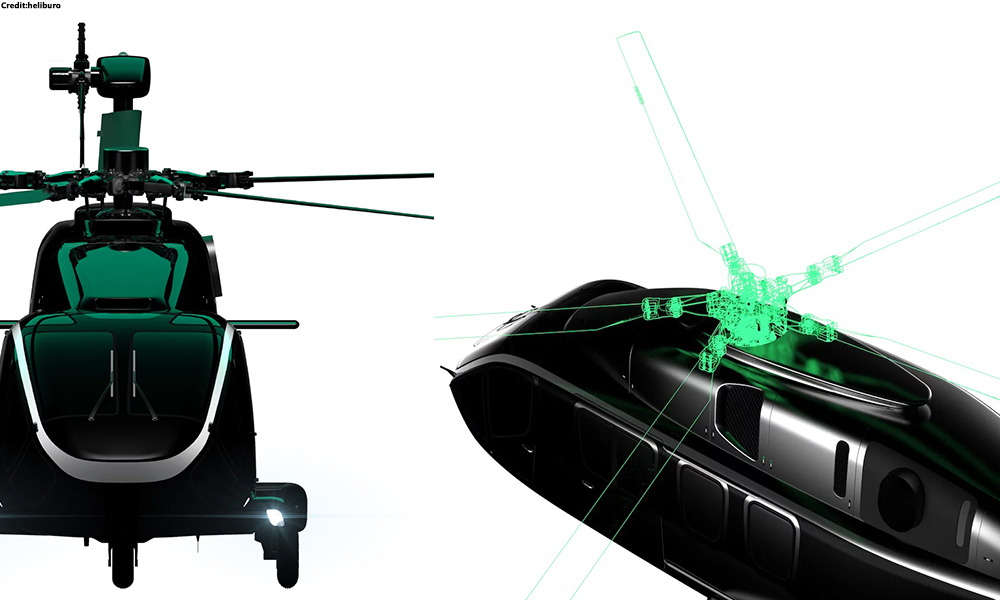Defence
Boeing Enhances Chinook with New Engines and Block II Upgrades at $96 Million

Boeing delivered the first CH-47F Block II Chinook to support ongoing modernization efforts of the U.S. Army. The Army’s fleet will have up to 465 aircraft that will be converted to the new Block II configuration.
Up to 465 CH-47F Chinooks will be upgraded
According to Heather McBryan, vice president and programme manager for cargo programmes, “the CH-47F Block II provides capability improvements allowing the U.S. Army to lift more, fly farther, and maintain their aircraft better than ever before.”
“The battle-tested Chinook will now be able to play a significant role in multi-domain operations thanks to this modernization programme.”
The CH-47F Block II can carry practically all payloads for a greater mission radius and offers an extra 4,000 pounds of maximum gross weight because to its upgraded drivetrain, strengthened airframe, and improved fuel system. Furthermore to the capability improvements, the aircraft’s design enables future technology upgrades.
The corporation also enhances aircraft sustainment through its Block II programme. The fuel system has been simplified to increase sustainment efficiency and decrease maintenance expenses, while the new rotor system’s increased reliability helps to minimise unscheduled maintenance.
In order to meet the demands of Special Operations Command and the Army for a heavy-lift helicopter that can withstand higher altitudes, larger loads, and hotter temperatures, Honeywell’s most recent T55-714C turboshaft engines and Boeing’s Chinook Block II improvements will make the CH-47 more powerful than ever.
Boeing upgraded the drive train, strengthened the CH-47’s fuselage, rebuilt the fuel tanks, and made other changes for the Chinook Block II that will allow the fleet to operate at greater performance levels.
Enables carrying 22,000-plus pounds of payload.
With the engine performance upgrades, the 6,000 shaft horsepower will be a 22% improvement over the present T55-714A and a four-fold increase over the original T55 engine.
This implies that the Chinook Block II helicopter, equipped with the new Honeywell engine, will be able to carry more than 22,000 pounds of cargo, as opposed to the CH-47’s present capacity of roughly 20,000.
Moreover, a new compressor module in the T55-714C will result in 8% less fuel use and a 25% increase in overall reliability, including a 40% longer compressor life.

Defence
Russia’s NV.17 Hybrid Helicopter Aims to Balance Light and Heavy Helicopter Needs

As Western sanctions continue to impact Russia’s aviation sector, the country is making significant strides in advancing its domestic aerospace capabilities.
Despite the ongoing challenges, Russia has unveiled the Heliburo HB.17, a cutting-edge hybrid-powered medium-class helicopter that promises to reshape both commercial and military aviation.
The helicopter is currently in the technical design phase, with plans for its first flight slated for 2027. This marks a major step forward in Russia’s efforts to modernize its aviation fleet and reduce reliance on foreign technology.
This country tops visa rejections in the popular Schengen countries
The HB.17 is designed as a versatile, multi-role aircraft, capable of performing a wide range of functions. It is built to handle cargo transport, passenger carriage, reconnaissance, and close air support missions. With its robust design and flexible capabilities, the HB.17 is expected to meet the needs of both military and commercial operators, offering a solution for missions requiring a greater capacity than light helicopters but avoiding the limitations of larger aircraft.
One of the most innovative features of the HB.17 is its hybrid power plant. This combination of conventional and electric technologies enhances fuel efficiency, allowing the helicopter to stay airborne for up to seven hours without needing to refuel.
This extended operational endurance makes the HB.17 particularly well-suited for long-duration missions, providing a significant advantage over traditional helicopters. Additionally, the HB.17 will be equipped with modern avionics, ensuring advanced navigation, communication, and operational capabilities.
Qatar Airways Cargo and MASkargo Launch New Strategic Partnership
The HB.17 is positioned to compete with other medium-class helicopters such as the Kamov Ka-60/62 and the Mil Mi-38. However, its hybrid powerplant and modern avionics set it apart, offering a more efficient and technologically advanced alternative.
Its multi-role versatility, combined with its fuel efficiency and cutting-edge systems, gives it a competitive edge in the evolving aviation landscape. The introduction of the HB.17 follows recent reports of Russia receiving a new batch of armored vehicles from the UAE-based Streit Group.
Russia has traditionally focused on producing helicopters for defense purposes, but this time, it appears to be venturing into the civilian helicopter market with the HB.17.
This, along with the ongoing development of the HB.17, reflects Russia’s continued efforts to modernize its military assets and increase its self-reliance, even as sanctions continue to pressure its defense and aerospace sectors.
As Russia faces mounting geopolitical challenges, the HB.17 stands as a symbol of resilience, technological innovation, and determination to maintain its military and aviation capabilities.
-

 Aviation2 months ago
Aviation2 months agoMicrosoft Flight Simulator Raises $3 Million to Bring Back the An-225 Mriya
-

 Airlines2 months ago
Airlines2 months agoQantas Engineers Stage Walkout Over Cost of Living Concerns
-

 Airlines2 months ago
Airlines2 months agoQatar Citizens Can Travel to the United States Without a Visa
-

 Aviation2 months ago
Aviation2 months agoQatar Airways bans these new Electronic Devices on plane
-

 Airlines2 months ago
Airlines2 months agoJapan Airlines Rolls Out Free Domestic Flights to International Passengers
-

 Defence2 months ago
Defence2 months agoWhich Country Has the Largest Fleet of Fighter Aircraft?
-

 Airport2 months ago
Airport2 months agoWestern Sydney Airport Welcomes Its First Plane After 6 Years of construction
-

 Aviation2 months ago
Aviation2 months agoDid you know ? Once Boeing 747 carried 1088 passenger in 1991








